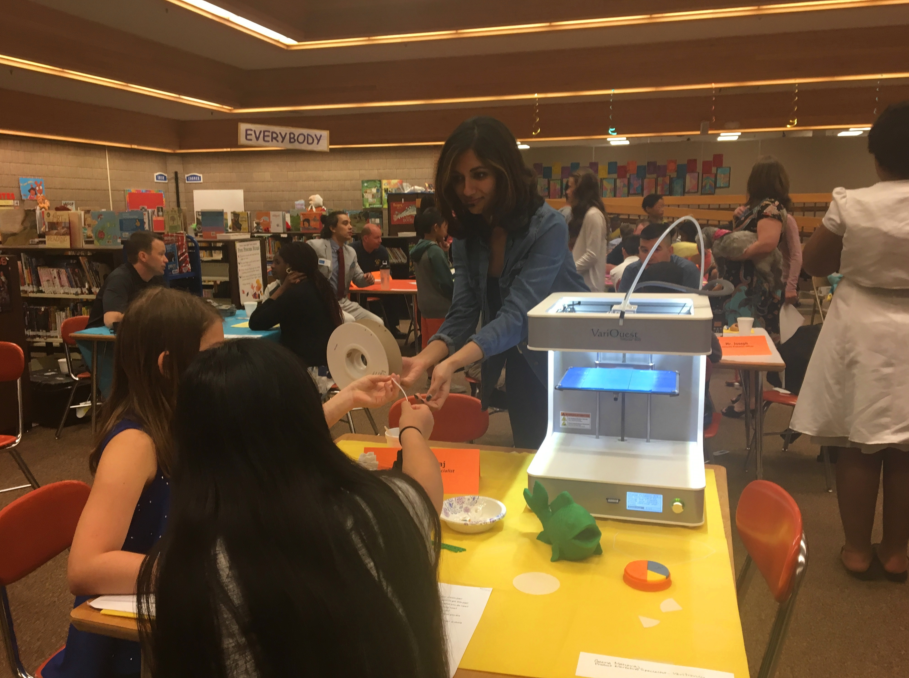By: Melissa Hughes, Ph.D. on April 18th, 2017
The Power of Experiential Learning
Academic Subject: STEM | VariQuest Tools: Perfecta 2400 | VariQuest Tools: Cutout Maker 1800 | Featured Topics: Student Engagement | VariQuest Tools: Trifecta 800 3D Printer

We used to call it hands-on learning. Before high-tech classrooms, learning labs, and makerspaces, kids would build and create and make things using buttons, bottle caps, popsicle sticks, and glue. The focus was on exploration, discovery, creativity, and problem-solving. There was no clear distinction between the arts, engineering, science, and math. Kids were making things, expressing their creativity, and they were learning how things worked.
The current buzzword is experiential learning, but the concept has been around for over 100 years. Dr. Maria Montessori would be thrilled to see the future of education rooted in her research. The movement of “making” brings engineering, science, technology, art and design together and overlaps those instructional principles with the natural inclinations of children the power of learning by doing.
Children are natural creators, and when we channel that energy into real and meaningful learning experiences, not only do their scores increase, but their passion for learning soars. Have you ever watched a 5-year old design a marble maze out of a piece of cardboard and some paper towel tubes? Or, have you witnessed a middle school student build a robot? It’s fascinating to witness the innate ingenuity, curiosity, persistence, and the drive to succeed. They don’t do it for an assignment or for a grade – they do it because they can. And when they do, they own the intrinsic rewards of learning.
Perhaps the most exciting part of this shift away from chalk and talk and back to hands-on learning is that it’s student-centric. Learning by doing and making puts the student at the center of the educational process and provides opportunities for kids to not only show that they know science, math, reading and writing, but also that they can use that knowledge to investigate, explore, and design solutions to real-world problems.
How does an educator create experiential activities? A general framework to consider when designing experiential learning activities might include the following:
- Decide which lessons could be enhanced with experiential learning. How can you transform that worksheet/textbook lesson into a hands-on experience that enables students to interact with the concepts?
- Experiential learning involves engaging multiple areas of the brain. How can you get them moving, discussing, and interacting with the content? Rather than an independent pencil/paper activity such as a graphic organizer or mathematical framework, consider enlarging the assignment to poster-size and letting two or three students work together to demonstrate their collective knowledge in pictures or other graphic elements.
- Think about those activities that provide opportunities for students to think like scientists. Give them time to develop a plan, test their plan, and then apply what they’ve learned to create a solution.
- Provide the freedom for the students to make mistakes, reflect upon those mistakes, and revise their plan accordingly. This reinforces that the most significant learning often comes from the “a-ha moments.”
- Incorporate 3-D printing into your building activities. Not sure where to start? VariQuest has some amazing lesson plans to make it easy.
Educators who provide various opportunities for experiential learning will help their students develop into active, engaged, self-directed, and reflective learners. Moreover, they will nurture their innate curiosity and a lifelong love for learning.
About Dr. Hughes
 Dr. Melissa Hughes is the founder of The Andrick Group and the author of the book, Happy Hour with Einstein. She develops and delivers professional development opportunities for educators across the country based upon whole-brain thinking and learning for deeper cognition and increased student engagement.
Dr. Melissa Hughes is the founder of The Andrick Group and the author of the book, Happy Hour with Einstein. She develops and delivers professional development opportunities for educators across the country based upon whole-brain thinking and learning for deeper cognition and increased student engagement.
Are you looking for easy-to-use solutions that foster a learn by doing approach, and brings lessons and ideas to life? VariQuest® has what you're looking for! Click below and we'll send you a FREE sample kit, along with information on the VariQuest Visual and Kinesthetic Learning Tools.


